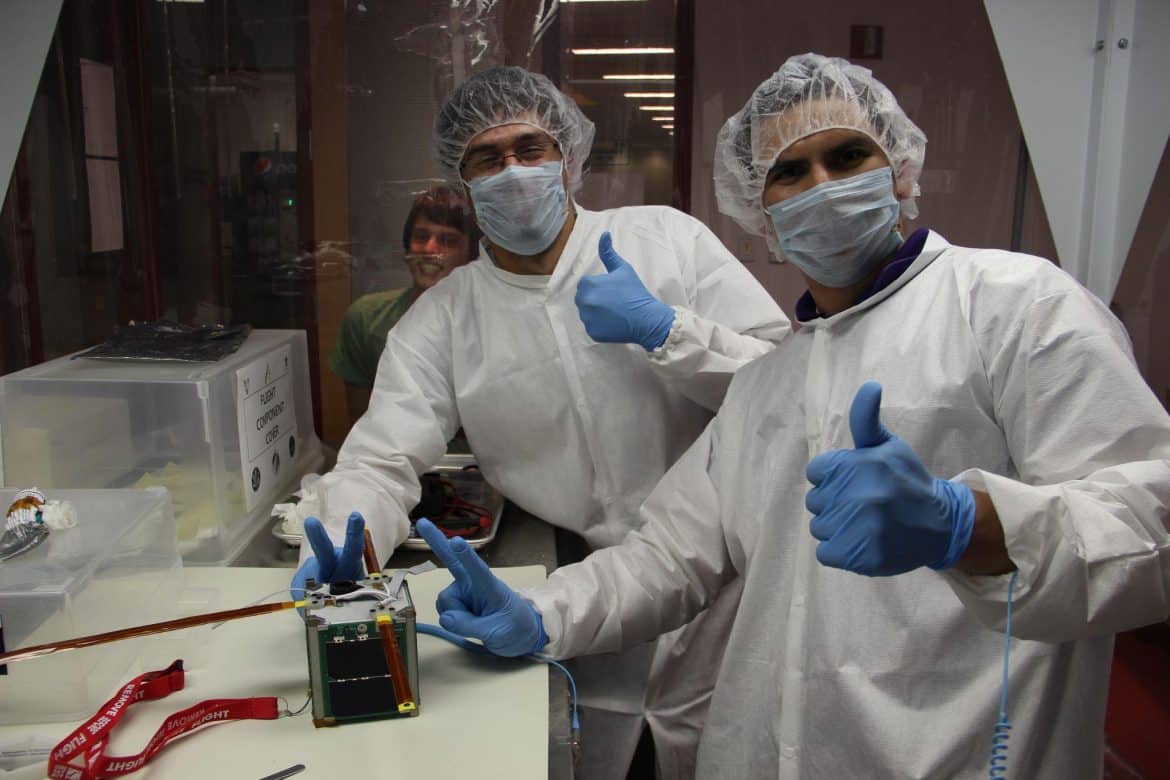CubeSats, compact satellites, that have a standardized design, have already revolutionized the way scientists and small businesses access space and analyze its data. These modular, affordable spacecraft can be equipped with any camera for CubeSat, depending on project needs or goals.
A CubeSat camera system can serve a vast range of purposes, from taking images of deep space to monitoring mundane processes back on Earth.
Below, we will take a quick look at available CubeSat camera types, their functionalities, designs, and resolution capabilities while also overviewing the potential price range for CubeSat camera tech. But first, let’s see what can CubeSat cameras do.
What can the CubeSats camera be used for?
The best camera for CubeSat powered by advanced tech can perform a vast range of versatile tasks. But generally, today’s CubeSat camera applications go down to:
● Earth observation: this is a huge area of scientific and commercial research that includes climate change monitoring, environmental control, disaster response, study of ocean levels and covers, etc. Some CubeSat cameras are even used for urban planning and analyzing the effects of industrialization on our planet. Depending on the specific camera for CubeSat function, its optical imagery shoots pictures in visible light, infrared, or multi-spectrum wavelengths.
● Astronomical research: our planet is not the only one CubeSat cameras can keep an eye on. The same tech is used to monitor other celestial bodies — for example, collect info on surface and atmospheric conditions of planets, their satellites, or asteroids.
● Technology demonstration: depending on CubeSat cameras designs, their imagers can be used for new technology demonstration directly in orbit. Often, new CubeSat imagers will eventually be installed on larger satellites or sent to deep space missions, but it’s common to test new tech on a more affordable CubeSat tech to mitigate property loss in case of failure.
● Educational research: due to their affordable price, CubeSats are regularly used for educational purposes. The range of projects can vary from environmental monitoring and predictive analysis to researching space environments. Typically, such projects are supported by various space agencies looking to employ top professional talent.
● Commerce and agriculture: The camera for CubeSat price makes it a lucrative investment for a whole range of businesses. For example, CubeSat camera tech is used in agriculture to forecast yield and monitor crop conditions. Or, small and mid-size companies can access CubeSat monitoring data to optimize their supply chains, track shipments, research landscapes, etc.
What types of CubeSat cameras are available?
Obviously, such a vast range of applications requires different CubeSat camera resolutions and other optical parameters to cope with each project’s tasks. Here are some of the top examples of CubeSat imagery solutions available today:
Standard Commercial Off-the-Shelf (COTS)
This is the most standard, uniform solution that, depending on the assembly, can accommodate a range of various business goals usually related to Earth observation. The ‘off-the-shelf’ name implies there is no need for any customization to integrate a CubeSat camera into a satellite bus.
The price range on off-the-shelf solutions can vary from $1,000 to $20,000, depending on CubeSat camera resolution. The latter, in turn, typically ranges from 1 MP to 5 MP.
Advanced High-Resolution
Advanced high-resolution CubeSat camera tech is frequently used for more sophisticated purposes, such as astronomical observation or precise monitoring of small land areas back on Earth. The resolution for this tech starts at 10MP and goes way higher, depending on satellite mission goals.
Another feature of high-res cameras is that they often require more space on a CubeSat and may call for additional customization. Typically, mission goals may require adding thermal regulation and radiation shielding.
Infrared and Multispectral
Unlike cameras that work in the visible light spectrum, these imagers work either in infrared and/or multi-spectrum. Such cameras are essential for environmental monitoring, assessing the consequences of climate change over time, forecasting yield, analyzing soil conditions, and exploring mineral resources.
The resolution for infrared and multispectral CubeSat cameras may vary greatly because they prioritize spectral range and sensitivity over sheer pixel count. The cost generally starts at $30,000.
Star Trackers and Navigation
These imagers do not provide any data for scientific analysis but are used primarily for navigation and orientation. The resolution is usually low, but such CubeSats are built to withstand the harsh space environment for as long as possible. Also, these cameras are equipped with specific software algorithms that support navigation. The price range for navigation tech often ranges between $10,000 and $50,000.
Summing it up, the applications of CubeSat cameras encompass science, commerce, and education. The affordable price makes it possible to include this technology in a variety of daily operations without the need for million-dollar budgets.
This gives businesses and research institutions a unique opportunity to access data from space and use it to improve our understanding of the processes taking place on our planet and beyond.

